
What Is a Marketing Plan? A Complete Guide for Businesses

28 March, 2025
Share this article
In today’s competitive business landscape, having a clear and structured approach to marketing is essential for success. A well-crafted marketing plan provides direction, ensuring that every campaign and strategy aligns with business goals and reaches the right audience effectively.
Without a strategic plan, businesses may struggle with inconsistent messaging, wasted resources, and missed opportunities. A marketing plan helps streamline efforts, allocate budgets wisely, and measure success with clear objectives.
This guide will walk you through the key components of a marketing plan, why it’s crucial for business growth, and how to create one that drives real results. Whether you’re launching a new business or refining an existing strategy, understanding how to build an effective marketing plan can make all the difference.
What is a Marketing Plan?
A marketing plan is a detailed document that describes a company's marketing strategy, objectives, and techniques for successfully promoting its goods and services. It acts as a guide for companies to follow, guaranteeing that all marketing initiatives complement their overarching goals. In a competitive market, a well-structured marketing plan helps businesses increase sales, establish brand awareness, and draw in and keep consumers.
The complexity of marketing plans varies according to the size of the company and the extent of its marketing initiatives. While some plans detail long-term objectives spanning months or even years, others concentrate on short-term efforts. An effective marketing plan, regardless of its duration, is goal-oriented, data-driven, and flexible enough to adjust to shifting market conditions.
Marketing Strategy vs. Marketing Plan
- Marketing Strategies: These include specific actions such as launching targeted advertising campaigns, creating valuable content, selecting effective marketing channels, and utilizing software to measure outcomes.
- Marketing Plan: In contrast, a marketing plan provides the overall framework from which multiple marketing strategies emerge. Essentially, the marketing plan connects each individual strategy to overarching business objectives, ensuring that each step supports the company's larger goals.
For instance, suppose your business is opening a new eco-friendly clothing store and wants to attract environmentally-conscious consumers. Your marketing plan will define your overarching goal to establish brand awareness and drive initial sales. To achieve this, you could develop several strategies such as:
- Hosting engaging launch events to introduce the brand locally.
- Creating informative blog content about sustainable fashion.
- Utilizing social media platforms like Instagram and Pinterest to visually showcase products and build a community.
In short, your marketing plan outlines your broad goal—establishing your brand in the eco-friendly fashion market—while your strategies detail how you will practically accomplish this through targeted, measurable activities.
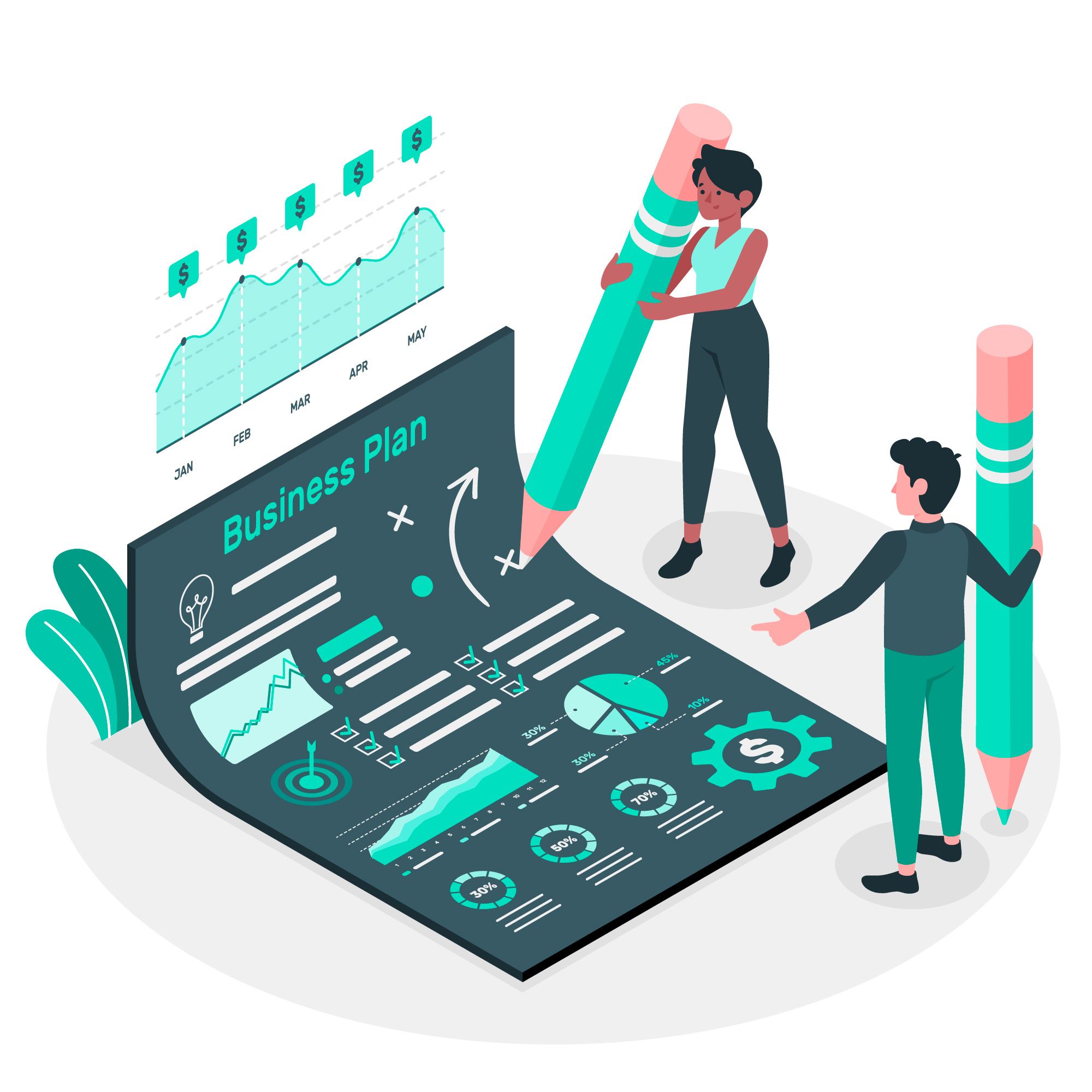
Marketing plan vs Business plan
Although they have different functions, a business plan and a marketing plan are both necessary for a firm to succeed. An extensive document that describes a company's overarching strategy, vision, and operational framework is called a business plan. It encompasses every facet of a company, such as its target market, competitive analysis, management structure, financial forecasts, mission, and operational plans.
A business plan serves as a road map for the expansion of the company and draws in lenders, investors, and other stakeholders who must comprehend how the enterprise will be sustainable and profitable. It usually has sections on long-term goals, financial planning, product or service offerings, market research, and company description.
A marketing strategy, on the other hand, is a thorough, strategic document that focuses on how the business will draw in and keep clients. A marketing strategy lays out the tactics and steps necessary to promote the brand, get leads, and increase sales, whereas a business plan establishes the overarching vision and direction.
Analysis of the target market, competition positioning, price plans, marketing techniques, distribution networks, and success metrics are all included. A business plan is more comprehensive and intended for long-term strategic planning, whereas a marketing strategy is more flexible and short-term, adapting to customer behavior and market trends.
A marketing plan delves deeper into advertising campaigns, content strategy, digital marketing initiatives, and consumer engagement approaches than a business plan, which could have a marketing section. The marketing strategy outlines how the company will meet its objectives through brand positioning and targeted outreach, while the business plan gives a high-level summary of its objectives and profitability.
The marketing plan lacks strategic direction without a strong business plan, and the business plan's growth expectations might not come to pass without an efficient marketing plan.
What is the purpose of a marketing plan?
A marketing plan acts as a strategic roadmap to assist companies in successfully achieving their marketing goals. By defining precise objectives and the actions required to achieve them, it offers a clear path forward. Businesses can more effectively attract and retain customers by customizing their messaging and tactics based on the identification of their target demographic.
A well-organized marketing strategy maximizes return on investment by ensuring that resources like funds, time, and staff are distributed efficiently. To ensure that marketing efforts are focused where they will be most successful, it also aids in the selection of the appropriate marketing channels, including digital, social media, traditional advertising, or a combination of these.
With a marketing plan in place, businesses can make informed decisions based on data and insights, allowing for adjustments to campaigns and strategies as needed. It also enables businesses to stay competitive by analyzing market trends, identifying opportunities, and addressing potential challenges.
Ultimately, a marketing plan provides structure, clarity, and focus, ensuring that all marketing efforts contribute to the overall growth and success of the business.
How to create a Marketing Plan
1. Define your business goal
Before implementing any marketing strategy, it is essential to establish clear and measurable business goals. These goals provide direction and ensure that all marketing activities align with your company’s vision.
Goals should follow the SMART framework, meaning they should be specific, measurable, achievable, relevant, and time-bound. For example, instead of setting a vague goal like “increase sales,” you should define it more precisely: “increase online sales by 30% in the next six months.” If your objective is brand awareness, you might aim to “increase Instagram engagement by 50% within the next quarter.”
Defining your goals early on helps you allocate resources efficiently, measure success accurately, and adjust strategies when necessary. Without clear goals, marketing efforts can become scattered and ineffective.
2. Identify your target audience
Understanding who your ideal customers are is crucial to creating effective marketing campaigns. Start by defining their demographics like age, gender, income level, occupation, education, and geographic location. Then, explore their psychographics, which include values, interests, lifestyle choices, and personal motivations.
Behavioral traits, such as purchasing habits, brand loyalty, and how they make buying decisions, provide further insight into how to market to them effectively. To gather this data, you can use customer surveys, focus groups, social media analytics, and website tracking tools like Google Analytics or Microsoft Clarity, both being free tools It’s important to mention, for the European readers, that you will need to respect GDPR guidelines when tracking users online.
A clear understanding of your target audience allows you to create messages that resonate, use the right marketing channels, and ultimately increase conversion rates. Marketing to a broad, undefined audience is inefficient and can lead to wasted resources.
Instead, narrowing down and understanding your ideal customer ensures that every dollar spent on marketing yields better results.
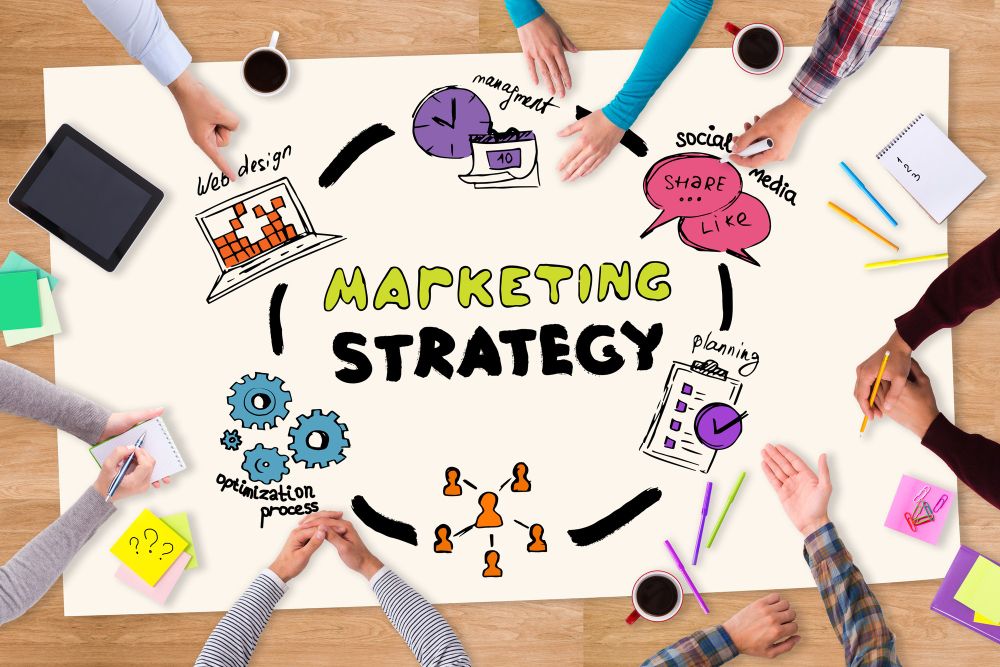
3. Decide on the channels
Choosing the right marketing channels, online or offline, is essential for reaching your target audience effectively. Understanding how these channels work individually and how they complement each other is key to building a well-rounded marketing strategy that maximizes both reach and conversions.
Online channels
Online marketing channels are digital platforms used to reach and engage with audiences through the internet. These include:
- Tik tok
Offline channels
Offline marketing channels rely on traditional, non-digital methods to reach consumers. These include:
- Television
- Radio
- Billboards
Types of online marketing channels
SEO
Search engine optimization (SEO) is the practice of getting targeted traffic to a website from a search engine’s organic (unpaid) rankings. The goal of SEO is to rank your website higher in search results for queries, known as keywords, related to your business.
When a company's target audience types in a query like "best-running shoes for rainy days" or "stores near me that sell waterproof running shoes," the objective of SEO is to increase the visibility and ranking (or location) of a company's assets, such as web pages, images, videos, downloadable documents, local business listings, etc., within the results returned by various search engines.
More than that, though, SEO aims to increase the quantity of quality traffic to your website in order to generate more leads, conversions, sales, donations, downloads, or whatever else makes your business successful.
SEO is one of the best long-term ways of bringing in traffic, with a high ROI. Yet, it is something that only works if your business has the budget to survive until results come in. Depending on the country, niche and industry, SEO can take anywhere from 6 months to 2 years to bring in relevant results.
Because of this, we recommend first doing PPC, and only after the business is stable, going for longterm strategies like SEO.
PPC (Pay per click)
PPC is an online advertising model in which advertisers pay each time a user clicks on one of their online ads. (or, in some cases, pay per 1000 impressions of an ad)
There are different types of PPC ads, but one of the most common types is the paid search ad.
These ads appear when people search for things online using a search engine like Google – especially when they are performing commercial searches, meaning that they’re looking for something to buy.
This could be anything from a mobile search (someone looking for “pizza near me” on their phone) to a local service search (someone looking for a dentist or a plumber in their area) to someone shopping for a gift (“Mother’s Day flowers”) or a high-end item like enterprise software.
All of these searches trigger pay-per-click ads.
In pay-per-click advertising, businesses running ads are only charged when a user actually clicks on their ad, hence the name “pay-per-click.” The most widely used platforms for PPC advertising are Google Ads, Facebook Ads, and Twitter Ads.
Other forms of PPC advertising include display advertising (typically, serving banner ads) and remarketing.
PPC is a great way of bringing in clients, because it can be easily refined, tracked and optimized. By setting the corect targeting of your campains and defining clear conversion points, you can easily know exactly how much money you are spending on each order coming in, and how much profit are you making per campaign.
This data allows you to quickly stop money wasting campaigns and increase the budget on the ones that work.
Social Media Marketing
Social media marketing (also known as digital marketing and e-marketing) is the use of social media, the platforms on which users build social networks and share information, to build a company's brand, increase sales, and drive website traffic.
In addition to providing companies with a way to engage with existing customers and reach new ones, SMM has purpose-built data analytics that allows marketers to track the success of their efforts and identify even more ways to engage.
Social media marketing leverages social media platforms and networks such as Facebook, X (formerly Twitter), and Instagram to promote products and services, engage with existing customers, and attract new ones.
It provides businesses with a direct channel to communicate with their audience, build brand awareness, and drive conversions.
The strength of social media marketing lies in its ability to connect businesses with their target audience, facilitate interactions, and collect valuable customer data. These platforms enable companies to engage in two-way communication, fostering relationships and increasing brand loyalty.
Additionally, the data gathered from social media interactions allows businesses to refine their messaging, making it more relevant and personalized.
This marketing approach has significantly changed how businesses influence consumer behavior. By sharing engaging content, brands can encourage customer interaction, build trust, and establish credibility.
Furthermore, social media provides deep insights into user preferences, allowing businesses to craft messages that resonate with their audience and drive meaningful engagement.
Email marketing
Email marketing is a direct marketing tactic that entails sending business emails to both current and prospective clients. Email marketing can be used by businesses to convey news, advertise new goods and services, increase sales, and foster client loyalty.
Compared to other channels, emails have a higher conversion rate since subscribers choose to join up for them. It is essential to the entire inbound strategy of the majority of firms because to its high return on investment (ROI).
In order to better engage target audiences, modern email marketing has shifted from one-size-fits-all bulk mailings to one that emphasizes consent, segmentation, and personalization. To build enduring partnerships, you must comprehend your customers' interests.
Although creating customized campaigns may seem time-consuming, software and marketing automation take care of the majority of the work for you. Over time, a well-thought-out email marketing plan increases revenue and fosters brand community development.
Some examples of email marketing campaigns:
- Emailing a client when he forgot his items in the cart and didn’t finish the order.
- Emailing users with recommended upsells based on their purchases
- Emailing patients to remind them to come for yearly checkups or to remind them they need to see their doctor again.
- Asking happy clients to recommend other clients in exchange for discounts or bonuses.
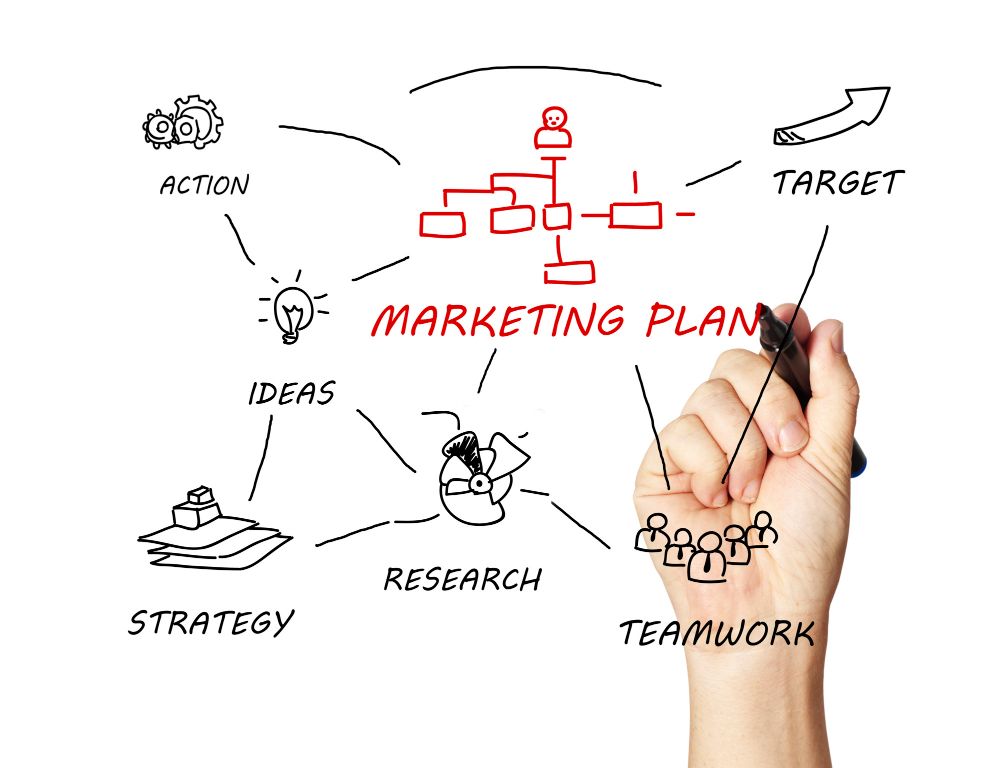
Influencer marketing
The practice of a brand working with an influencer to promote one of its goods or services is known as influencer marketing. Influencers can influence prospective customers by endorsing or suggesting goods or services on their social media accounts, which makes their utilization deemed successful.
Increasing brand recognition is the aim of this approach. This is due to the fact that influencers and their audiences typically share an emotional connection. in order to affect the audience's inclinations and actions.
One tactic that is increasingly being used to help digital marketing succeed is influencer marketing. This method will be very helpful in building brand awareness and customer trust. This is why putting this technique into practice is crucial.
Influencers are usually paid in 2 ways:
- Upfront payment
- Commissions
What we recommend is going for a combination of the 2. Provide lower upfront payments, and give the influencers a unique code. Pay them a set amount for each customer that uses that specific code.
Types of offline channels
Offline marketing channels continue to play a significant role in brand awareness and consumer engagement, despite the dominance of digital platforms. These channels rely on traditional, non-digital methods to reach audiences and can be particularly effective for broad audience targeting, local reach, and brand credibility.
Television remains one of the most powerful offline marketing channels (even if it's very expensive) particularly for large brands looking to reach a mass audience. It offers unparalleled visibility and the ability to create strong emotional connections through high-quality video content.
Radio advertising is another influential offline marketing channel, particularly effective for local and regional businesses. With commuters and daily listeners tuning in during peak hours, radio offers a direct way to reach audiences in their cars, workplaces, or homes. It is cost-effective compared to television and allows brands to create memorable jingles, sponsorships, and interactive campaigns such as call-ins or live promotions.
Traditional static billboards have been a staple of outdoor advertising for years, offering brands widespread visibility in high-traffic areas. However, with advancements in technology, digital billboards have emerged as a more interactive and dynamic alternative, allowing for real-time content updates and greater audience engagement.
Digital billboards are a modern form of outdoor advertising that use LED screens to display dynamic, real-time content. Unlike static billboards, they allow businesses to update messages based on time, weather, or events, enhancing relevance and engagement. With high-quality visuals, motion graphics, and interactive features, digital billboards capture attention in high-traffic areas like city centers and highways.
They also integrate with mobile devices and online marketing, bridging offline and digital strategies. While they offer flexibility and impact, higher costs and regulatory restrictions can be challenges. Overall, digital billboards combine the reach of traditional advertising with the innovation of digital media.
In order to better understand if billboards bring in revenue or not, we recommend treating them as if they were digital banners. Meaning that you can:
- Use a different QR code, phone number or email on each banner.
By doing this, you will understand which specific bilboard or location in your city brings clients and which don’t, based on the number of leads you get
4. Research competition, what others do, campaigns, ads
A competitive analysis will help you see your own unique advantages as well as any potential barriers to growth so you can strengthen your marketing and business strategies. It also keeps your business proactive instead of reactive.
Many entrepreneurs operate based on preconceived ideas about their competitors and market landscape, but those ideas may not be accurate or may be out of date.
There are some steps you need to follow when doing a competitive analysis.
- Identify the competitors
- Gather information about your competitors
- Analyze their strengths and weaknesses
- Determine your competitive advantage
Ads Transparency tools, like Meta Ads Library, allow businesses to analyze competitors' advertising strategies by viewing both active and past campaigns. These tools help marketers refine their own strategies, identify trends, and understand effective messaging and targeting.
By examining historical ad data, businesses can spot patterns in promotions and product launches while ensuring compliance with industry regulations. Ultimately, leveraging ad transparency tools helps brands stay competitive, optimize their advertising efforts, and contribute to a more ethical and accountable digital marketing environment.
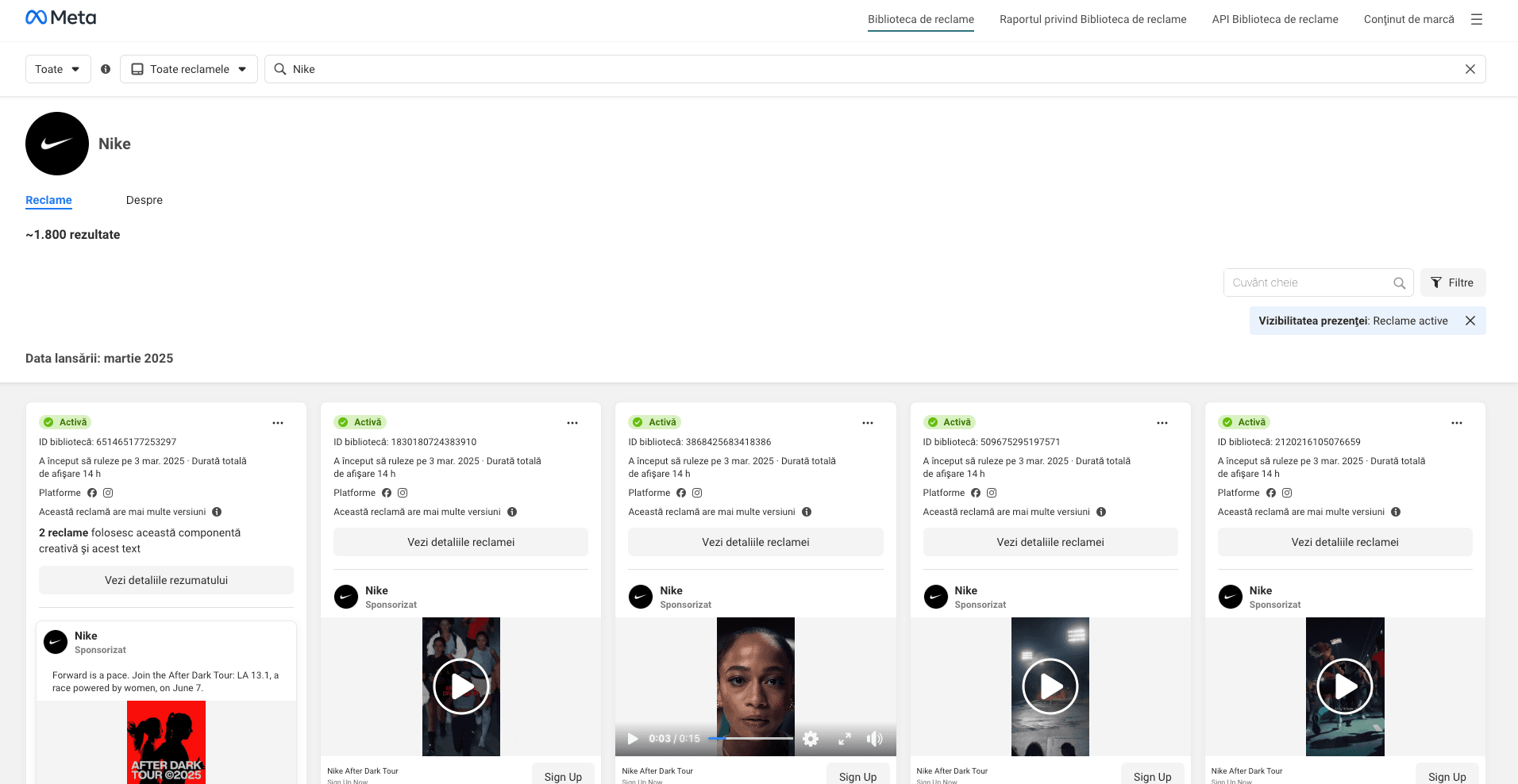
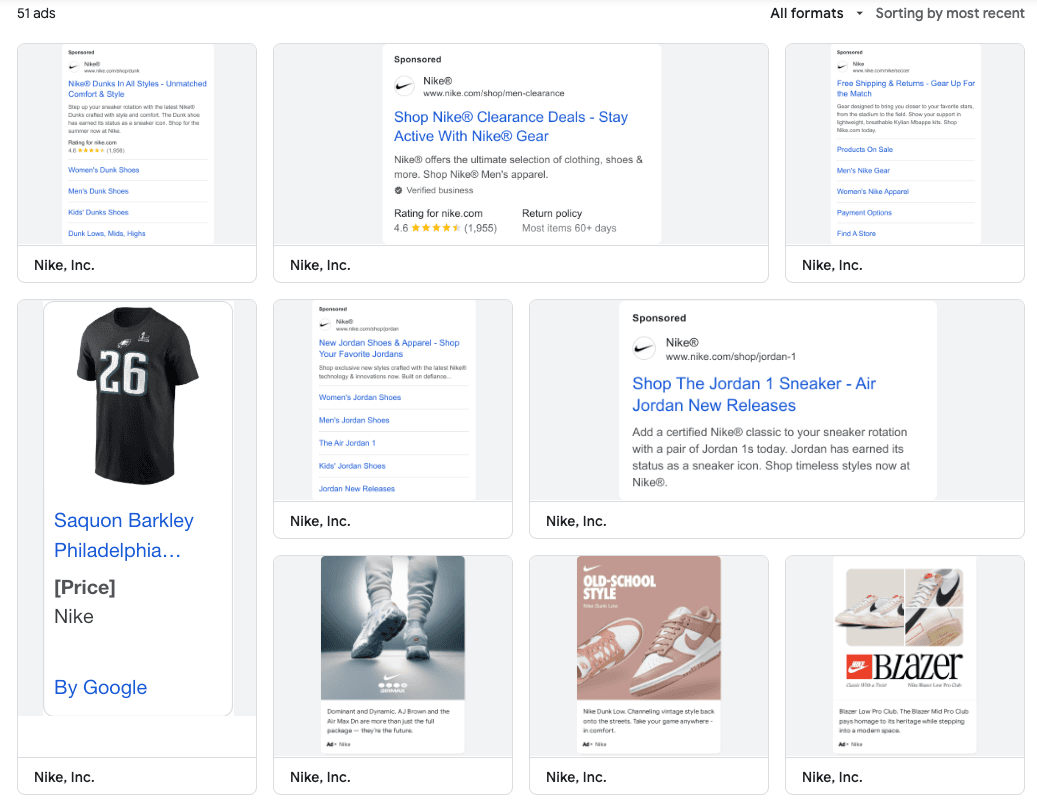
Another option is to use SEO tools like SemRush or ahrefs for a better understanding of the marketing. SEO companies can do a 4 year research on Google searches, in order to better understand what people search for on the internet, as well as understand the trends of specific products.
Besides that, AI tools like perplexity do wonders on business research.
5. Budget: importance of an awareness budget (strictly for brand visibility, not for driving sales) and a performance budget based on cost per acquisition.
A well-defined marketing budget is crucial for the success of any marketing plan, as it ensures that resources are allocated efficiently to achieve business goals. Without a clear budget, companies risk overspending, underinvesting, or misallocating funds, which can lead to ineffective campaigns and lost opportunities.
There are two types of budgets, awareness budgets and performance budget.
An awareness budget is the portion of a marketing budget allocated to increasing brand visibility, recognition, and reach among a broader audience. The primary goal of this budget is to generate interest and familiarity with a brand, product, or service rather than focusing directly on conversions or sales.
Investing in awareness is crucial for businesses looking to build credibility, expand market presence, and establish long-term customer trust. This type of budgeting is especially important for new brands, product launches, or businesses entering new markets where consumer familiarity is low.
A performance budget is the portion of a marketing budget allocated to strategies that drive measurable results, such as conversions, sales, leads, or customer acquisition. Unlike an awareness budget, which focuses on brand recognition and reach, a performance budget is results-driven and aims to achieve a direct return on investment (ROI).
The performance budget should be set around cost per acquisition. What does this mean? Many businesses have a maximum sum that they are willing to pay for an order or a client (the acquisition). This cost is the maximum amount of marketing cost where you are still profitable with bringing clients.
For example, an ecommerce selling pijamas may have an average cost per acquisition of around $8. Meaning that, as long as it takes less than $8 to bring an order, they are always profitable. If it goes over $8, they are losing money.
When the CPA is set, the marketing budget can be unlimited, as long as it is respected. Many marketing agencies work with this model, in order to ensure exponential growth that is not limited by a budget.
6. Tracking and kpi measurement
Key Performance Indicators (KPIs) are measurable metrics that help track the effectiveness of marketing campaigns. When running campaigns involving Google Analytics, Facebook Analytics, influencers, and QR code banners, selecting the right KPIs ensures better tracking, optimization, and decision-making.
Before starting a promotional campaign, it is essential to ensure that tracking is working properly. In the case of an eCommerce business, for example, the entire safety process must be tracked completely and accurately, from the first visit to the product page, to adding products to the cart and completing the order.
The correct data collected does not allow us to effectively optimize Facebook and Google Ads campaigns and make strategic decisions that contribute to achieving and even exceeding stability KPIs. Through clear visibility into user interactions, we can allocate budgets more effectively, refine targeting strategies and maximize campaign performance.
7. Rinse and repeat
The final step in a marketing plan is reviewing past actions, analyzing results, optimizing strategies, and iterating for better performance. This phase is crucial to ensure continuous improvement and maximize return on investment (ROI). Below is a breakdown of what this step entails and why it is essential.
So here are some suggested steps you can follow:
- Review what was done
- Analyse performance metrics
- Gather insights and feedback
- Optimize and adjust
- Implement learnings in the next campaign
Keep up to date with our most recent articles, events and all that Pluria has to offer you.
By subscribing to the newsletter you agree with the privacy policy.

In the last two years I’ve been working remotely from over 20 countries but no part of the world compares to Latin America: countries and cultures spreading over two continents with climates[...]
04 December, 2023

A massive move to hybrid work
In 2022, 60% of companies will switch to a hybrid working model, and a third of them will fail on their first attempt to work from anywhere, Forrester p[...]
04 December, 2023

When the employees in the most innovative company on the planet rally against their CEO because he wants them back in the office three days a week, it is a sign that it is not enough to be innovative in tec[...]
04 December, 2023